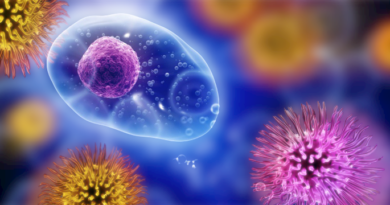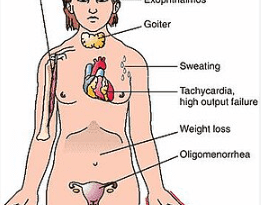what is sideroblastic anemia
what is sideroblastic anemia
A specific kind of anemia known as sideroblastic anemia is characterized by the production of sideroblasts by the bone marrow. Iron granules (known as siderosomes) that have not yet been integrated into hemoglobin, the protein that transports oxygen in red blood cells, are found in sideroblasts, which are juvenile red blood cells.
Reduced oxygen levels in the body result from the aberrant sideroblasts’ inability to transport oxygen adequately in sideroblastic anemia. An enlarged spleen or liver, weariness, weakness, pale complexion, and shortness of breath are all signs of sideroblastic anemia.
Sideroblastic anemia comes in two basic varieties: acquired and hereditary. A number of things, including exposure to chemicals, drugs, or alcohol, as well as some medical diseases like myelodysplastic syndrome, can contribute to acquired sideroblastic anemia. Genetic mutations are the primary cause of inherited sideroblastic anemia, which often manifests from birth.
Depending on the underlying reason, sideroblastic anemia may be treated with drugs, blood transfusions, or, in extreme circumstances, a bone marrow transplant.

sideroblastic anemia symptoms
The severity of the problem may affect how severe a person’s sideroblastic anemia symptoms are. These are a few of the more typical signs of sideroblastic anemia:
- Even after receiving enough rest, a person with sideroblastic anemia could still feel exhausted and weak.
- Skin that seems pale: The loss of red blood cells may make the skin appear pale.
- Shortness of breath: Low oxygen levels in the body can make it harder to breathe or cause shortness of breath.
- Fast heartbeat: In order to make up for the body’s lower oxygen levels, the heart may beat more quickly than usual.
- Spleen or liver enlargement: As a result of having to work harder to filter faulty red blood cells, the spleen or liver may get larger.
- Dizziness or lightheadedness: Low oxygen levels might make someone feel lightheaded or dizzy.
- Headaches: Lowered brain oxygen levels might cause headaches.
- A person with sideroblastic anemia may be more sensitive to the cold than usual, especially in their hands and feet.
- Decreased oxygen levels might impact a person’s mood and make them irritable or make it harder for them to concentrate.
It’s crucial to consult a healthcare professional if you have any of these symptoms in order to have a precise diagnosis and the best course of action.
sideroblastic anemia treatment
The underlying cause of sideroblastic anemia affects how the problem is treated. Typical forms of therapy include:
- Supplemental vitamin B6: Sideroblastic anemia can occasionally be brought on by a vitamin B6 deficiency. Supplemental vitamin B6 may be recommended in certain circumstances to aid the body in producing regular red blood cells.
- Drugs: To assist the bone marrow in producing more regular red blood cells, doctors may prescribe drugs that increase the creation of red blood cells.
- Blood transfusions: A blood transfusion may be required if the anemia is severe in order to boost the body’s supply of red blood cells.
- Bone marrow transplant: To replace the defective bone marrow cells with healthy ones in severe instances of sideroblastic anemia, a bone marrow transplant may be required.
- Treatment of underlying conditions: If an underlying medical disease, such as myelodysplastic syndrome, is what’s causing the anemia, treating that illness may help the anemia get better.
- Avoiding toxins: If toxins or medicines were the cause of your anemia, you should try to stay away from them to treat your condition.
Based on the underlying reason, the severity of the anemia, and general health state, a customized treatment strategy for sideroblastic anemia is created for each patient. A medical professional will collaborate with the patient to create a treatment strategy that best suits their requirements.



How is acquired sideroblastic anemia diagnosed?
Many tests and exams can be used to identify acquired sideroblastic anemia. Typical diagnostic techniques include:
- Blood testing: Blood tests can provide information about the quantity, composition, and shape of red blood cells as well as the iron and hemoglobin levels in the body. Blood tests can also be used to detect any further blood cell abnormalities, such as the presence of aberrant sideroblasts.
- Bone marrow biopsy: With a needle, a tiny sample of bone marrow is taken from the hip bone during a bone marrow biopsy. The sample is then inspected under a microscope to see whether any unusual sideroblasts are present.
- Genetic testing: Genetic mutations can occasionally be the cause of acquired sideroblastic anemia. These mutations can be found and whether the anemia is acquired or inherited can be determined with the use of genetic testing.
- Imaging procedures: Imaging procedures, such CT scans or MRIs, can be used to look for any structural irregularities in the organs or tissues involved in the formation or decomposition of red blood cells.
- Medical history and physical exam: To look for any indications of anemia or underlying medical issues, a healthcare professional will ask about the patient’s medical history and conduct a physical exam.
If you have any acquired sideroblastic anemia risk factors or are exhibiting any anemic symptoms, it is crucial that you contact a doctor. Early detection and intervention can enhance results and reduce problems.
What is another name for sideroblastic anemia?



Ringed sideroblast anemia and sideroblastic anemia are other names for the same condition.
sideroblastic anemia: pathophysiology
A kind of anemia called sideroblastic anemia is characterized by ringed sideroblasts in the bone marrow. Red blood cell precursors called ringed sideroblasts accumulate iron in their mitochondria, which causes an iron-rich ring to develop around the nucleus.
A problem with heme production underlies the pathophysiology of sideroblastic anemia, which leads to an iron buildup in the mitochondria of growing red blood cells. The synthesis of heme, an iron-containing molecule necessary for the production of hemoglobin, the protein that transports oxygen in the blood, is hampered by this iron excess.
Sideroblastic anemia comes in two primary varieties: acquired and inherited. Genetic sideroblastic anemia is brought on by mutations in heme biosynthesis-related genes including ALAS2, SLC25A38, or ABCB7. On the other hand, acquired sideroblastic anemia can be brought on by a number of things, such as a lack of vitamin B6, exposure to chemicals or medicines, or underlying medical problems like myelodysplastic syndrome.
Depending on the underlying etiology, acquired sideroblastic anemia has a different pathogenesis. For instance, a lack of vitamin B6 might affect the activity of pyridoxal 5′-phosphate (PLP), a cofactor required for the formation of heme. Toxin or drug exposure can harm the bone marrow, impairing the synthesis of red blood cells and resulting in the development of ringed sideroblasts. The bone marrow is affected by the blood cancer known as myelodysplastic syndrome, which results in aberrant red blood cell production and the development of ringed sideroblasts.
In conclusion, a problem with heme biosynthesis causes a buildup of iron in growing red blood cells, which hinders the production of hemoglobin and causes sideroblastic anemia. The pathophysiology of sideroblastic anemia might change depending on the underlying etiology of the disorder.










Pingback: How were vaccines invented - AFitHelp